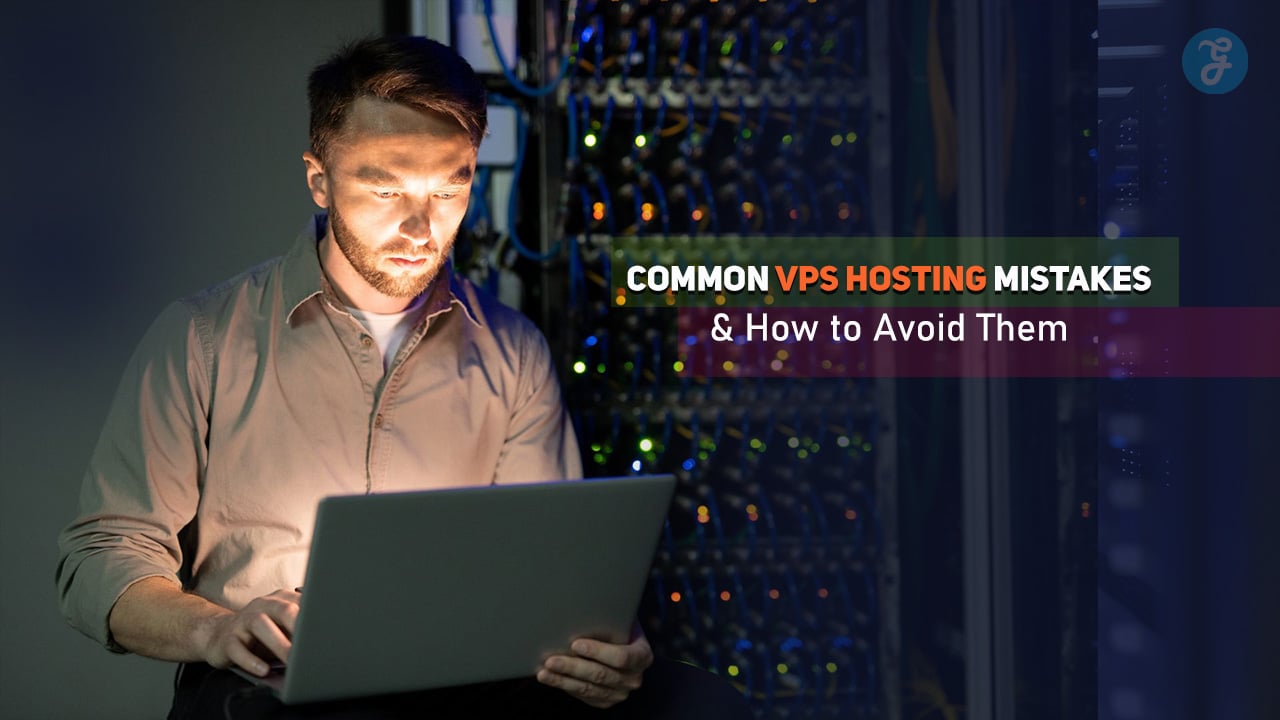Virtual Private Server (VPS) hosting offers more control, flexibility, and power compared to shared hosting.
However, managing a VPS requires technical expertise, and it’s easy to make mistakes that can impact performance, security, and overall user experience.
Whether you’re new to VPS hosting or a seasoned user, being aware of common pitfalls can help you avoid costly errors and ensure your server runs optimally.
In this guide, we’ll explore 15 common VPS hosting mistakes and provide detailed tips on how to avoid them.
By the end of this article, you’ll be better equipped to manage your VPS effectively and avoid the most frequent issues that can slow down your site or compromise its security.
1. Choosing the Wrong VPS Plan
One of the most common mistakes is selecting a VPS plan that doesn’t match your website’s needs.
Many users opt for the cheapest plan without considering their resource requirements.
If you choose a VPS with insufficient CPU, RAM, or storage, your website will suffer from slow performance, crashes, and an overall poor user experience.
On the other hand, overestimating your needs and selecting an overly powerful plan can lead to unnecessary expenses.
How to Avoid This Mistake
- Evaluate Your Needs: Assess your website’s traffic, resource usage, and future growth potential before choosing a plan.
- Start Small: It’s better to start with a smaller plan and upgrade as your needs grow rather than paying for resources you won’t use.
- Use Monitoring Tools: Keep an eye on your resource usage with monitoring tools to determine if you need to upgrade or downgrade your VPS.
2. Ignoring Security Measures
VPS hosting gives you root access and more control, but with this comes the responsibility of securing your server.
Ignoring basic security measures, such as leaving default passwords or failing to implement a firewall, makes your VPS vulnerable to cyberattacks.
A hacked VPS can result in data theft, downtime, and financial loss.
Many users overlook security measures when setting up their VPS, leaving it exposed to potential threats.
How to Avoid This Mistake
- Change Default Credentials: Immediately change any default usernames and passwords to something more secure.
- Install a Firewall: Use a firewall like UFW (Uncomplicated Firewall) to block unauthorized access.
- Regular Updates: Keep your OS and software updated to patch known vulnerabilities.
- Use SSH Keys: Implement SSH key authentication instead of password-based login for added security.
3. Neglecting Regular Backups
Many users fail to implement a reliable backup system for their VPS.
This mistake can be disastrous if your server experiences hardware failure, a cyberattack, or data corruption.
Without regular backups, you risk losing valuable data and facing downtime that can harm your reputation and business.
Even though VPS hosting offers more stability than shared hosting, data loss can happen anytime.
How to Avoid This Mistake
- Set Up Automated Backups: Most VPS hosting providers offer automated backup services. Enable them to ensure regular backups without manual intervention.
- Offsite Backups: Store your backups on an offsite server or cloud storage for added security.
- Test Your Backups: Regularly test your backups to ensure they work when needed.
- Backup Frequency: Choose the right backup frequency based on how often your data changes. For dynamic websites, daily backups are recommended.
4. Not Optimizing the VPS for Performance
A VPS offers more power and control, but without proper optimization, it won’t perform to its full potential.
Many users don’t optimize their server’s settings or fail to implement caching and content delivery network (CDN) solutions, leading to slow load times and reduced user satisfaction.
Performance issues can impact your SEO ranking and cause visitors to leave your site.
How to Avoid This Mistake
- Install Caching: Use caching tools like Varnish, Memcached, or Redis to speed up server response times.
- Optimize Databases: Regularly optimize your databases, especially if you’re using CMS platforms like WordPress that rely on MySQL.
- Use a CDN: A Content Delivery Network (CDN) like Cloudflare distributes your content across multiple servers worldwide, improving load times for users in different locations.
- Monitor Performance: Use monitoring tools like New Relic or GTmetrix to identify performance bottlenecks.
5. Misconfiguring DNS Settings
DNS (Domain Name System) settings are crucial for your website’s availability, yet they are often misconfigured by VPS users.
Incorrect DNS settings can lead to issues like your domain not resolving properly, delays in website loading, or even complete inaccessibility.
DNS misconfigurations are especially common when migrating from shared hosting to a VPS.
How to Avoid This Mistake
- Double-Check DNS Records: Ensure that your DNS records, including A, CNAME, and MX records, are correctly set up to point to your VPS.
- Use Reliable DNS Servers: Opt for reliable DNS providers like Google DNS or Cloudflare DNS for faster query resolution.
- Monitor DNS Propagation: When making DNS changes, use tools like WhatsMyDNS to monitor DNS propagation globally.
- Test After Migration: After migrating your site to VPS, always test DNS settings to ensure everything is pointing correctly.
6. Overlooking Resource Monitoring
Failing to monitor your VPS’s resource usage is a common mistake that can lead to performance issues or unexpected downtimes.
Without proper monitoring, you might not notice that your server is running out of CPU, RAM, or disk space until it’s too late.
Overuse of resources can cause your website to slow down or even crash during traffic spikes.
How to Avoid This Mistake
- Use Monitoring Tools: Tools like Nagios, Zabbix, and your hosting provider’s built-in monitoring can alert you when resource usage is high.
- Set Alerts: Configure alerts to notify you via email or SMS if CPU or memory usage exceeds a certain threshold.
- Optimize Resource Use: Ensure that you’re running only the necessary services on your VPS, and disable any unused processes to free up resources.
- Scale as Needed: If your website traffic is growing, upgrade your VPS plan to meet the demand.
7. Failing to Secure Databases
Databases contain sensitive information, and failing to secure them properly is a significant mistake.
If databases are not secured, attackers can easily gain access to critical data, causing data breaches or service interruptions.
Many users leave their databases exposed by using weak passwords, not encrypting sensitive data, or exposing the database to external networks without proper security.
How to Avoid This Mistake
- Use Strong Passwords: Ensure that database passwords are complex and not easy to guess.
- Encrypt Sensitive Data: Use encryption methods such as SSL/TLS to protect data in transit.
- Restrict Access: Limit database access to specific IP addresses and ensure that only authorized users can interact with it.
- Regular Security Audits: Conduct regular security audits of your database settings to check for vulnerabilities.
8. Not Installing Security Patches Regularly
Software vulnerabilities are one of the most common attack vectors for cybercriminals.
Failing to install the latest security patches for your operating system, control panel, or server software can leave your VPS vulnerable to known exploits.
Many users overlook updates, leaving their servers exposed to attacks.
How to Avoid This Mistake
- Enable Automatic Updates: For security patches, it’s wise to enable automatic updates for critical software components.
- Regularly Check for Updates: Make it a habit to check for updates and patches for your server’s OS and other installed software.
- Backup Before Updating: Always back up your server before applying updates to avoid potential issues from failed updates.
- Stay Informed: Subscribe to mailing lists or notifications from your hosting provider to stay updated on the latest security patches.
9. Incorrect File Permissions
Setting incorrect file permissions can open your VPS to unauthorized access and data breaches.
File permissions determine who can read, write, or execute files on your server.
Improper permissions can lead to sensitive data being exposed or malicious users gaining control over critical files.
How to Avoid This Mistake
- Set Appropriate Permissions: Ensure that sensitive files like configuration files have restrictive permissions (e.g., 644 for configuration files, 755 for directories).
- Use the Principle of Least Privilege: Only give users the permissions they need to perform their tasks. Avoid giving root access unnecessarily.
- Monitor File Changes: Use tools like Tripwire to monitor file changes and detect any unauthorized modifications.
- Regularly Review Permissions: Periodically review file and directory permissions to ensure they align with security best practices.
10. Overloading the VPS with Too Many Applications
A common mistake among VPS users is overloading the server with too many applications, which can lead to performance degradation.
Hosting multiple websites, applications, or heavy workloads on a single VPS without proper resource allocation can slow down the server, cause crashes, and make it difficult to manage the VPS efficiently.
How to Avoid This Mistake
- Monitor Resource Usage: Use tools like htop or your hosting provider’s monitoring tool to track CPU and memory usage.
- Limit the Number of Applications: Only run essential applications on your VPS to avoid overloading it.
- Upgrade Resources: If you need to host multiple applications, consider upgrading your plan to ensure adequate resources.
- Containerization: Use containerization tools like Docker to manage multiple applications more efficiently on the same VPS.
11. Skipping Server Optimization Post-Setup
After setting up your VPS, many users forget the critical step of optimizing the server for performance.
Leaving default configurations unchanged can lead to suboptimal performance, security risks, and unnecessary resource usage.
Without optimization, your server might not be running at its full potential, even if you’ve selected the right hosting plan.
How to Avoid This Mistake
- Optimize Web Servers: Fine-tune your web server settings (e.g., Nginx or Apache) to improve performance.
- Database Optimization: Optimize your database settings (e.g., MySQL or PostgreSQL) to reduce query load times and improve data retrieval efficiency.
- Tune Cache Settings: Use Redis or Memcached to cache frequently requested data and improve server response times.
- Disable Unnecessary Services: Turn off any services that are not required to free up system resources.
12. Not Using a Control Panel
VPS hosting can be overwhelming without a control panel to manage server resources, databases, files, and email accounts.
Many users try to manage their VPS manually, which can lead to configuration errors, inefficiency, and time wastage.
Control panels like cPanel or Plesk provide an easy-to-use interface for managing various aspects of your server, saving time and effort.
How to Avoid This Mistake
- Choose a Suitable Control Panel: Select a control panel that fits your needs, whether it’s cPanel for simplicity or Plesk for more advanced features.
- Automate Tasks: Use the control panel’s automation tools for tasks like backups, email management, and software updates.
- Use Built-in Security Features: Many control panels come with built-in security tools such as firewalls and malware scanners.
- Consider Open-Source Alternatives: If you’re on a budget, explore open-source control panels like Webmin or ISPConfig.
13. Not Setting Up Proper SSL Certificates
An SSL certificate encrypts the data transmitted between your server and your visitors, ensuring that sensitive information, such as passwords and credit card details, is protected.
Failing to set up SSL on your VPS not only puts your visitors’ data at risk but can also lead to poor SEO rankings and a lack of trust from users.
Many VPS users either skip SSL installation or do it incorrectly, leading to insecure websites.
How to Avoid This Mistake
- Use Free SSL Certificates: Platforms like Let’s Encrypt offer free SSL certificates that are easy to install and renew.
- Install SSL Correctly: Follow your hosting provider’s guide to ensure the SSL certificate is properly configured.
- Set Up Auto-Renewal: Ensure your SSL certificate doesn’t expire by setting up auto-renewal.
- Check for Mixed Content Issues: After installing SSL, make sure all elements of your website (like images and scripts) are served over HTTPS to avoid mixed content warnings.
14. Forgetting About Regular Server Maintenance
Just like any other system, your VPS requires regular maintenance to continue functioning efficiently.
Many users forget about ongoing maintenance, which can lead to vulnerabilities, slow performance, and eventual server downtime.
Without regular maintenance, you risk your server becoming bloated with outdated software, logs, and unnecessary files.
How to Avoid This Mistake
- Clean Up Logs: Regularly clear out old log files to free up disk space.
- Update Software: Keep your server’s software, including the OS, up to date to protect against vulnerabilities.
- Monitor Disk Usage: Ensure your disk space is not being consumed by unnecessary files or backups.
- Check Error Logs: Regularly review your server’s error logs to identify and resolve issues before they become major problems.
15. Misconfiguring Email Servers
Setting up an email server on your VPS can be challenging, and many users make mistakes that lead to emails being marked as spam or failing to send entirely.
Common mistakes include failing to set up SPF, DKIM, and DMARC records, which are essential for authenticating emails and ensuring they don’t end up in recipients’ spam folders.
How to Avoid This Mistake
- Configure SPF, DKIM, and DMARC: These records authenticate your emails and help prevent them from being marked as spam.
- Use a Dedicated IP Address: Sending emails from a shared IP can hurt your sender reputation. A dedicated IP ensures your email delivery is more reliable.
- Monitor Blacklists: Regularly check if your server’s IP address has been blacklisted and take action to resolve any issues.
- Use SMTP Relay Services: To avoid email delivery problems, consider using an SMTP relay service like SendGrid or Amazon SES.
Conclusion: Avoiding Common VPS Hosting Mistakes for Better Performance
Managing a VPS requires more attention and technical knowledge compared to shared hosting, but the rewards in terms of performance and control are worth the effort.
By avoiding these 15 common VPS hosting mistakes, you can optimize your server’s performance, enhance security, and ensure a smooth, trouble-free experience for your visitors.
Regular monitoring, proactive security measures, and proper server maintenance will go a long way in maximizing the potential of your VPS hosting.






































